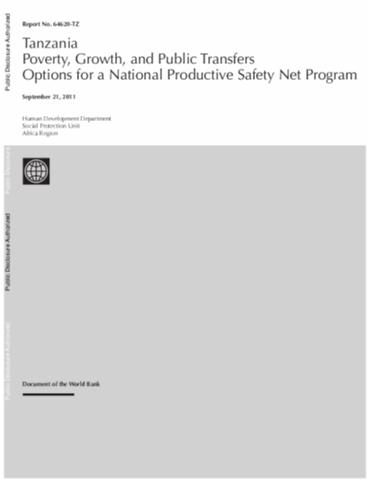Resource information
Tanzania has made significant economic progress in the recent past, with per capita national income almost doubling from United States (U.S.) 230 dollars equivalent in the late-1990s to U.S. 440 dollars. This report explores the role safety nets and transfers can play in reducing poverty more rapidly in Tanzania. It presents the potential need and costs, to inform a debate of options. The report reviews existing programs, and provides recommendations for an action plan to strengthen the current system and develop a more unified national program, one which will have a greater impact on poverty levels at reasonable cost, in line with the Government's poverty reduction strategy, known by the Swahili acronym MKUKUTA. The report looks at transfers to the poor, including public works employment, subsidies, food distribution programs, cash and in-kind transfers, and vouchers. This paper is organized in following chapters: chapter one gives introduction; attempts to lay out what the options might be, within an analytical assessment of the nature of poverty and shocks faced by the poor in Tanzania is given in chapter two; chapter three examines the effectiveness of existing transfer programs; at a strategic level it then evaluates the capacity of the state to spend on transfers, and how safety net programs can fit into the wider national development agenda is given in chapter four. The paper concludes by discussing some of the institutional and administrative concerns that effect program design in chapter five; and outlines for a series of immediate steps to improve the effectiveness of existing programs; as well as a medium-term strategy for moving towards a more unified national program is discussed in chapter six.


